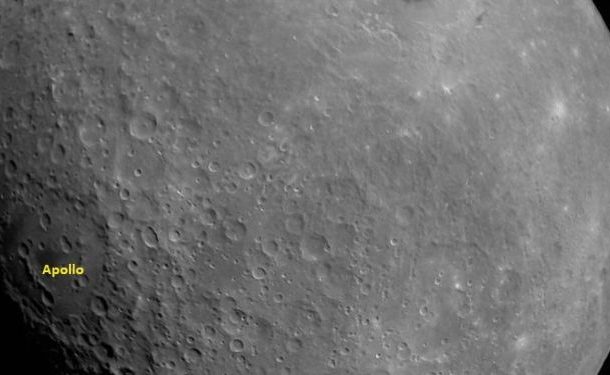Subscribe
https://cdn1.img.sputniknews.com/img/107661/43/1076614361_0:0:1200:675_1200x675_80_0_0_046d84083ba04464330c313891b0e5f7.jpg
Sputnik International
https://cdn2.img.sputniknews.com/i/logo.png
Aakriti Sharma. Sputnik International
https://sputniknews.com/india/202009071080386179-moon-may-be-rusting-along-the-poles-study-on-data-from-indias-first-lunar-mission-chandrayaan-1--/
A paper by an assistant professor from the University of Hawaii, Shuai Li, has found that like Mars, the Moon has rust on it as well. The paper reviewed data from the Indian Space Research Organisation's Chandrayaan-1 orbiter, which had discovered water ice and mapped minerals while surveying the Moon's surface in 2008.
The surface of the Moon consists of iron-rich rocks but the presence of hematite, a form of iron oxide or rust, along the poles in the absence of water and oxygen has surprised scientists. The data reviewed in a Science Advances paper by Shuai Li of the University of Hawaii has studied the facts from Chandrayaan-1's Moon Mineralogy Mapper instrument (M3).
India's Minister of State for Space Dr Jitendra Singh has also acknowledged the revelations which are based on data collected from the nation's first lunar mission Chandrayaan-1 in 2008.
Image of the moon from NASA's Moon Mineralogy Mapper on the Indian Space Research Organization's Chandrayaan-1 mission @isro pic.twitter.com/qpM3O6bPPE
— Aakriti Sharma (@_aakritisharma) September 7, 2020
Scientists have suggested a three-pronged model for the formation of rust along the poles taking into consideration previous research suggesting oxygen from Earth’s atmosphere hitches rides to travel to the Moon. With more hematite on the side of the Moon facing Earth, the possibility is that Earth's oxygen could be driving the formation of hematite, according to Li.
The second possibility is hydrogen delivered by solar wind, which prevents oxidation but during certain periods of the Moon's orbit (specifically, whenever it's in the full Moon phase), Earth's magnetotail blocks over 99% of the solar wind. This may provide an occasional window for the formation of rust, as per the scientists.The paper highlights that water molecules found on the lunar surface may be mixing with iron in the lunar soil and heat from this could increase the oxidation rate; hence there maybe some suitable moments when a rust-inducing chemical reaction may occur.
Third Lunar Mission in 2021
Minister of State for Space Jitendra Singh has revealed that India's third lunar mission Chandrayaan-3 will be launched in early 2021, but without an orbiter. It will only include a lander and a rover.
 ©
©
Sputnik / Vladimir Sergeev
'Confirmed or Likely': NASA Releases Alleged Image of India Moon Lander Crash Site
The orbiter from the second lunar mission Chandrayaan-2 is working fine and has been sending data, claimed ISRO. ISRO had indicated that the third Moon mission will utilise the orbiter already in the lunar orbit. The launch was earlier planned for 2020 but has been delayed due to the outbreak of the pandemic and subsequent lockdown.
TrackDo not trackCommunity standardsDiscussion
- Сomment
-
Post limit reached. Please try again in a minute.
-
Your comment contains a link, so it can't be published on our site
All comments
Show more comments (20)
- Сomment
-
Reply

in reply to(Show commentHide comment)
| | Edit | Delete
Save
Thank you! Your comment will be reviewed by the moderator for compliance with the RulesSource: sputniknews.com



Comments